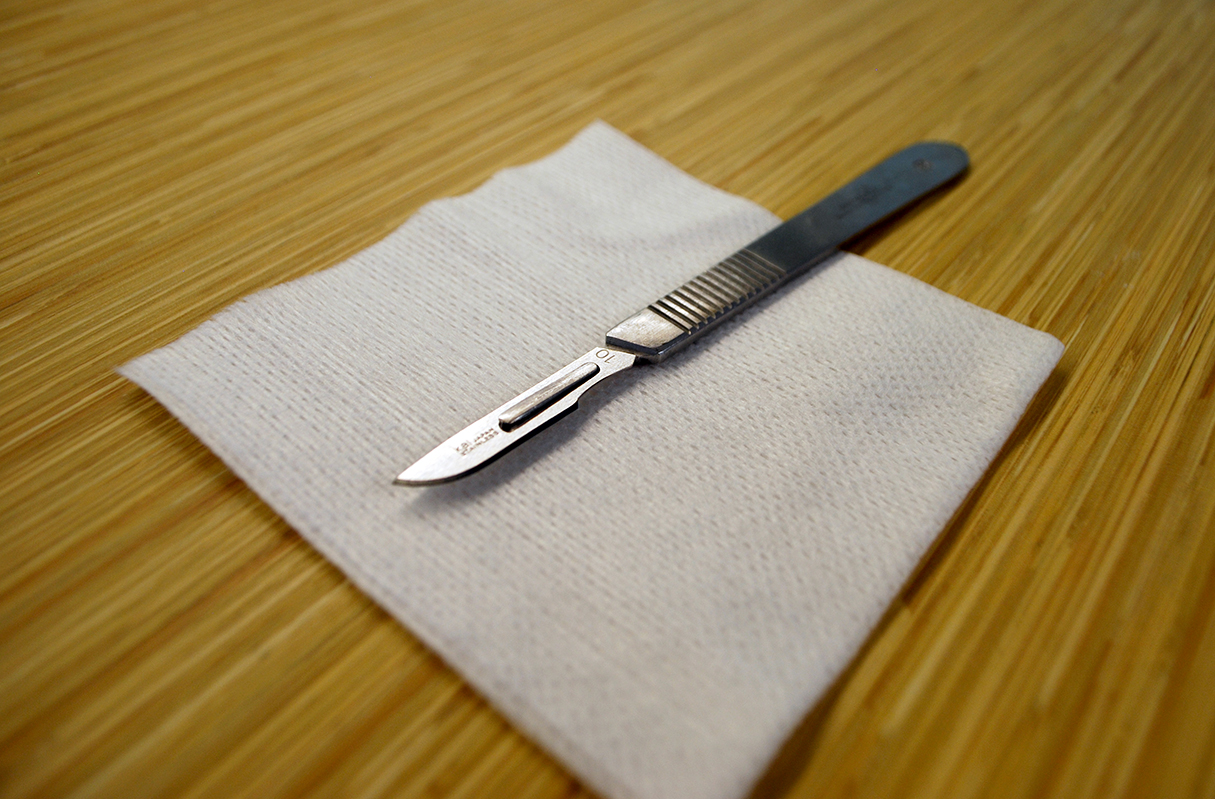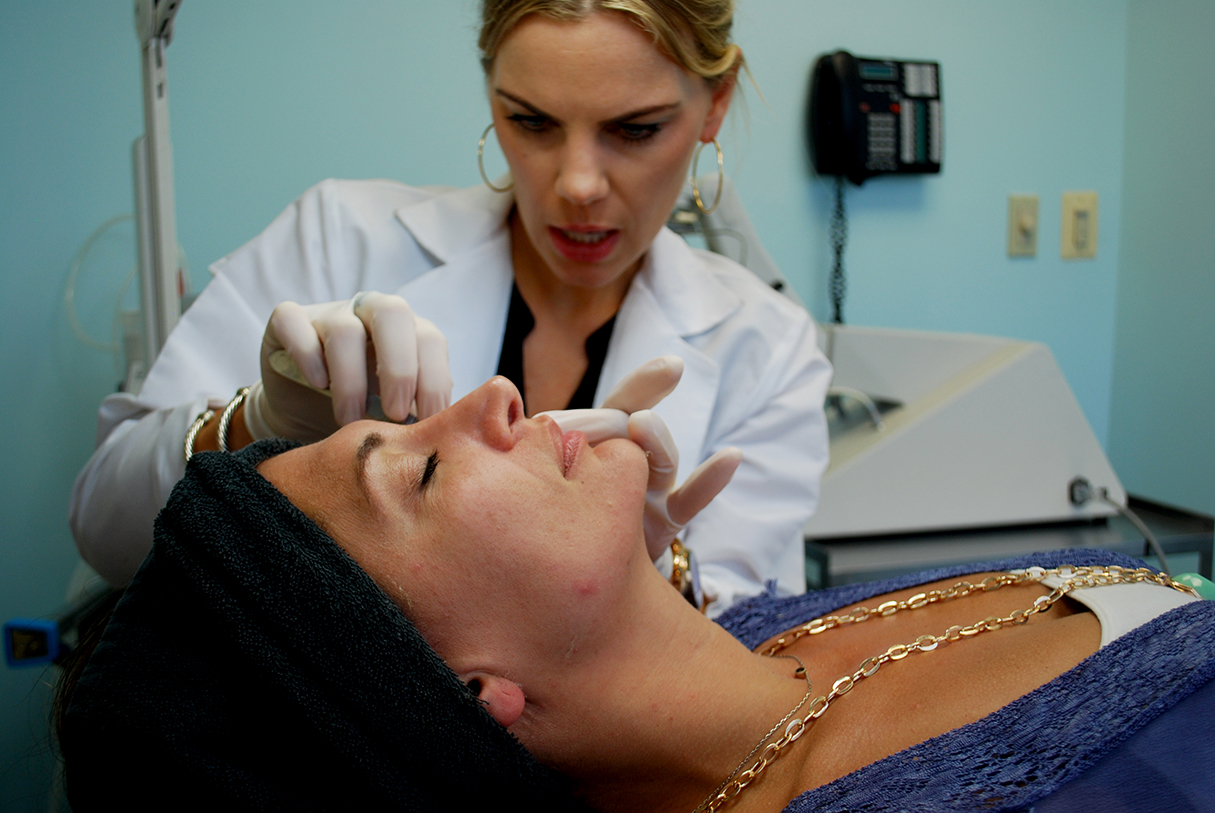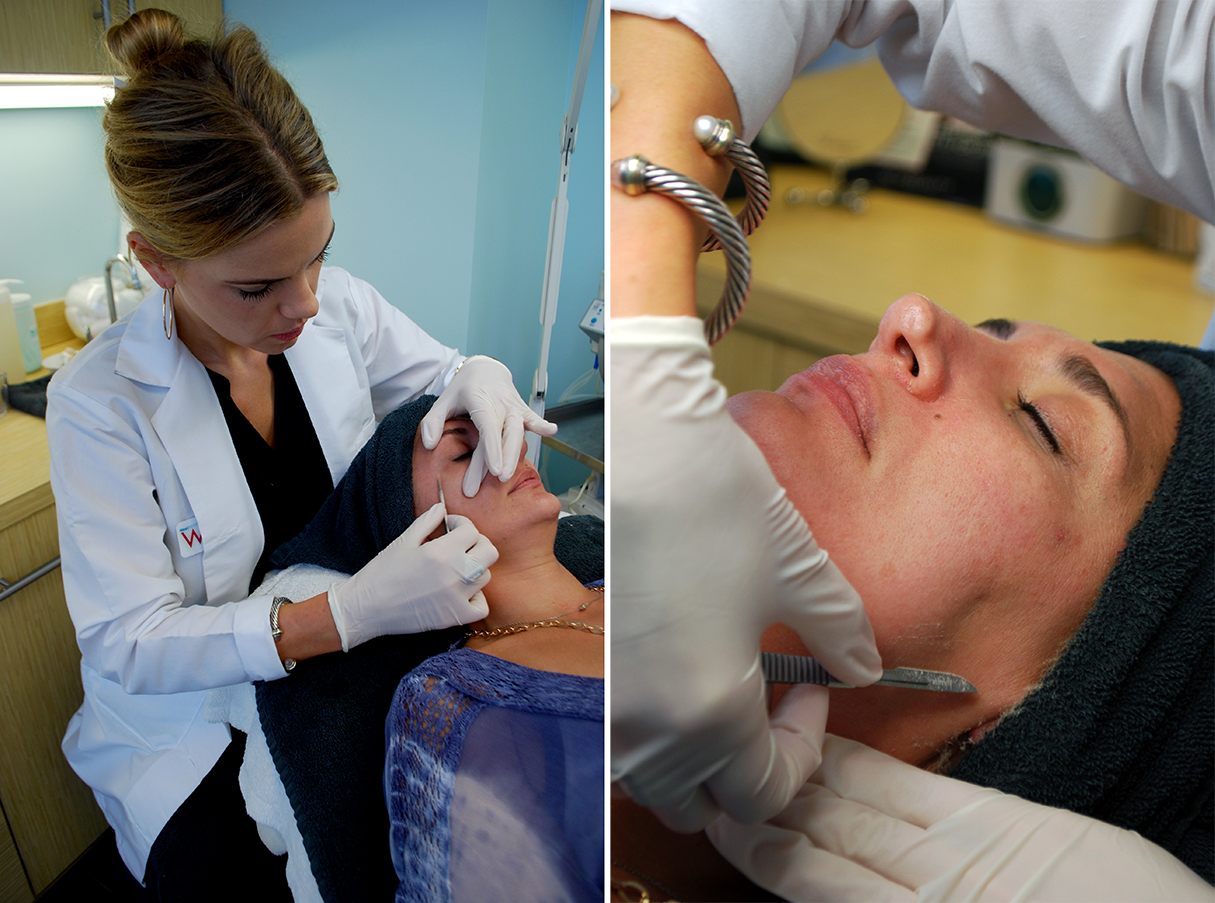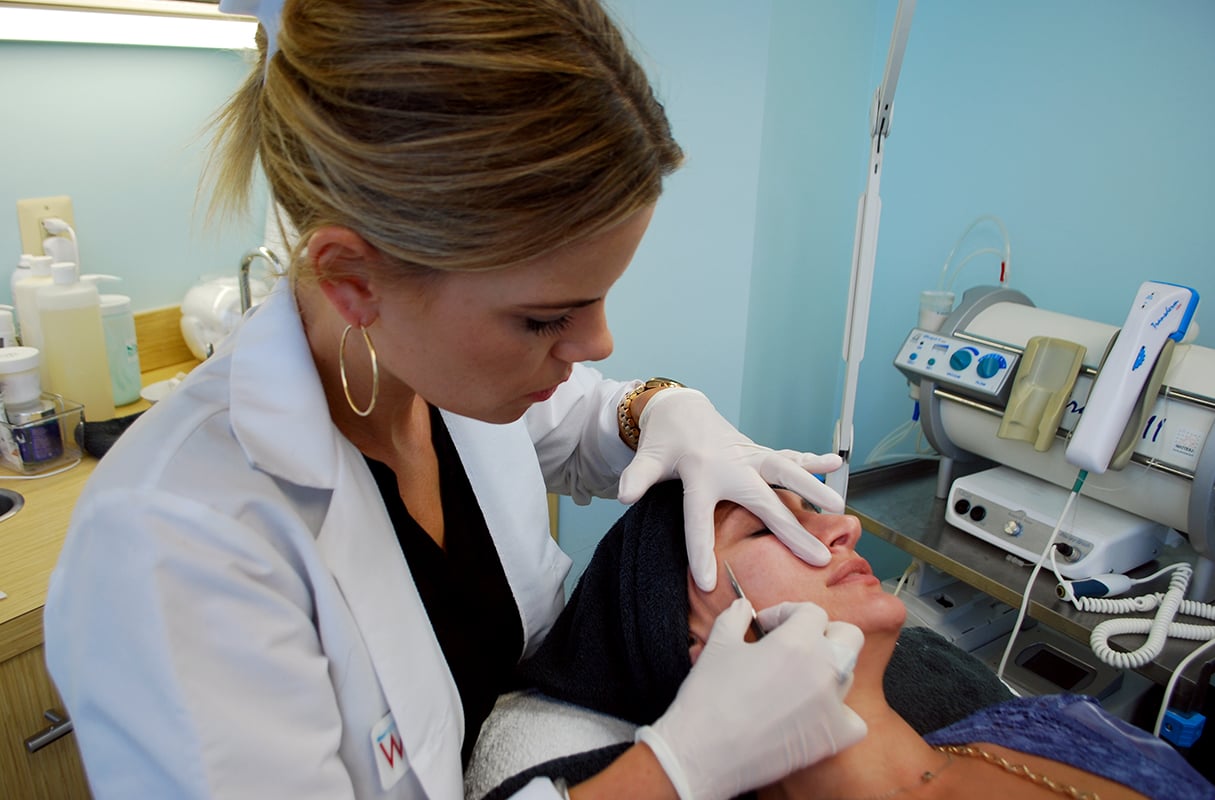In my 40 years, I’ve subjected my face to a sometimes cruel game of trial and error more often than I care to admit. I get overly excited about many of the pore-shrinking, wrinkle-erasing treatments I hear about—and because I’m a beauty writer, I hear about them all.
A few months ago, I ran into a friend whose skin looked fantastic. Not a drastic change, like a sudden lack of lines or a fullness that wasn’t there before. But it looked incredibly smooth, more alive somehow. She was wearing only a touch of makeup, which was unusual for her.
She said she was having her face professionally shaved. And no, she wasn’t a bearded lady.
“Dermaplaning” is the science-lab-sounding name for what amounts to having a dermatologist or medical aesthetician run a sharp, inch-long surgical scalpel across your skin to scrape off dead cells as well as peach fuzz. (This is similar to what men do when they pull a razor across their face.)

I’d heard about dermaplaning before. It’s been around for decades—a lifetime in beauty-fad terms—but interest in it recently increased after a Bravo “housewife” mentioned it on the show.
That’s not an endorsement that would normally make me try something. But I could see the appeal: no lasers or needles, no tingly chemicals. It’s about as basic as it gets—manual removal of the skin’s outer layers. Still, I was skeptical about whether something so easy could make a difference in what I see as my face’s biggest problems—enlarged and sometimes congested pores, fine lines, and a skin tone that has gotten a bit duller and more uneven as I’ve grown older.
When I talked to my dermatologist, Tina West in Chevy Chase, she said it’s one of the most effective ways to remove dead skin cells, which can accumulate when our skin-sloughing cycle slows. This buildup can cause skin to look dull, dry, and crinkly. One reason the treatment may not be more widespread, says Dr. West, is that it’s best done in doctors’ offices, not in spas or salons (though Marilyn Monroe and Elizabeth Taylor are rumored to have simply shaved their faces themselves).
I decided to try it. During the procedure, my skin was cleansed and dried, then gently pulled taut while a blade was moved in quick, short swipes across my face at a 45-degree angle. After 20 minutes of what felt like a facial massage, a moisturizer was applied.
And that was it. There was no downtime, no redness, no discomfort. I was surprised to see an immediate improvement in my skin—a little more radiance, a fading of mild discoloration, and a smoother texture. While I didn’t emerge looking 30, my complexion seemed as refreshed as it has been after chemical peels that caused my skin to peel off in sheets for days at a time.


Dermaplaning, which costs $105 to $500 a session, can be repeated every two to four weeks—the time it takes for the skin to produce more dead cells—and can be a choice for those whose skin is too sensitive for chemical peels or microdermabrasion. It’s also an option for pregnant and nursing women and provides a deeper exfoliation than other chemical-free treatments such as scrubs.
A bonus I didn’t expect: The beauty products I was already using at home seemed to work better after the procedure. “Ingredients like vitamin C and retinol often can’t get past the layers of dead skin cells to reach the point in the dermis where they can make a difference,” says West. “Once skin is deeply exfoliated and there’s less of a barrier to keep ingredients from absorbing, skin will begin to look better.”
Dermaplaning isn’t for everyone. It should be avoided by those with red, inflamed acne because it can lead to scarring, much as picking a pimple would. And because you’re dealing with a sharp instrument, there’s a risk of scarring, hyperpigmentation, and infection, says dermatologist Howard Brooks of the Skin Cosmetic Dermatology Center in Georgetown: “It’s important to choose a physician who is very familiar with the procedure or who provides direct oversight of the practitioner, because they will be removing layers of skin and if they go too deep or aren’t careful around delicate areas like the eyes and nose, you could have some real problems.”
I was worried that after the procedure, peach fuzz on my face would grow back thicker and darker. It didn’t. “It’s a myth,” says West. “Shaving doesn’t change anything about the hair you have, so it will grow back exactly as it was before.”
This article appears in our July 2015 issue of Washingtonian.










![Rockville-Town-Square-Library-View-[Credit-City-of-Rockville]-scaled-down - Washingtonian](https://www.washingtonian.com/wp-content/uploads/2024/02/Rockville-Town-Square-Library-View-Credit-City-of-Rockville-scaled-down-1500x1000.jpg)



